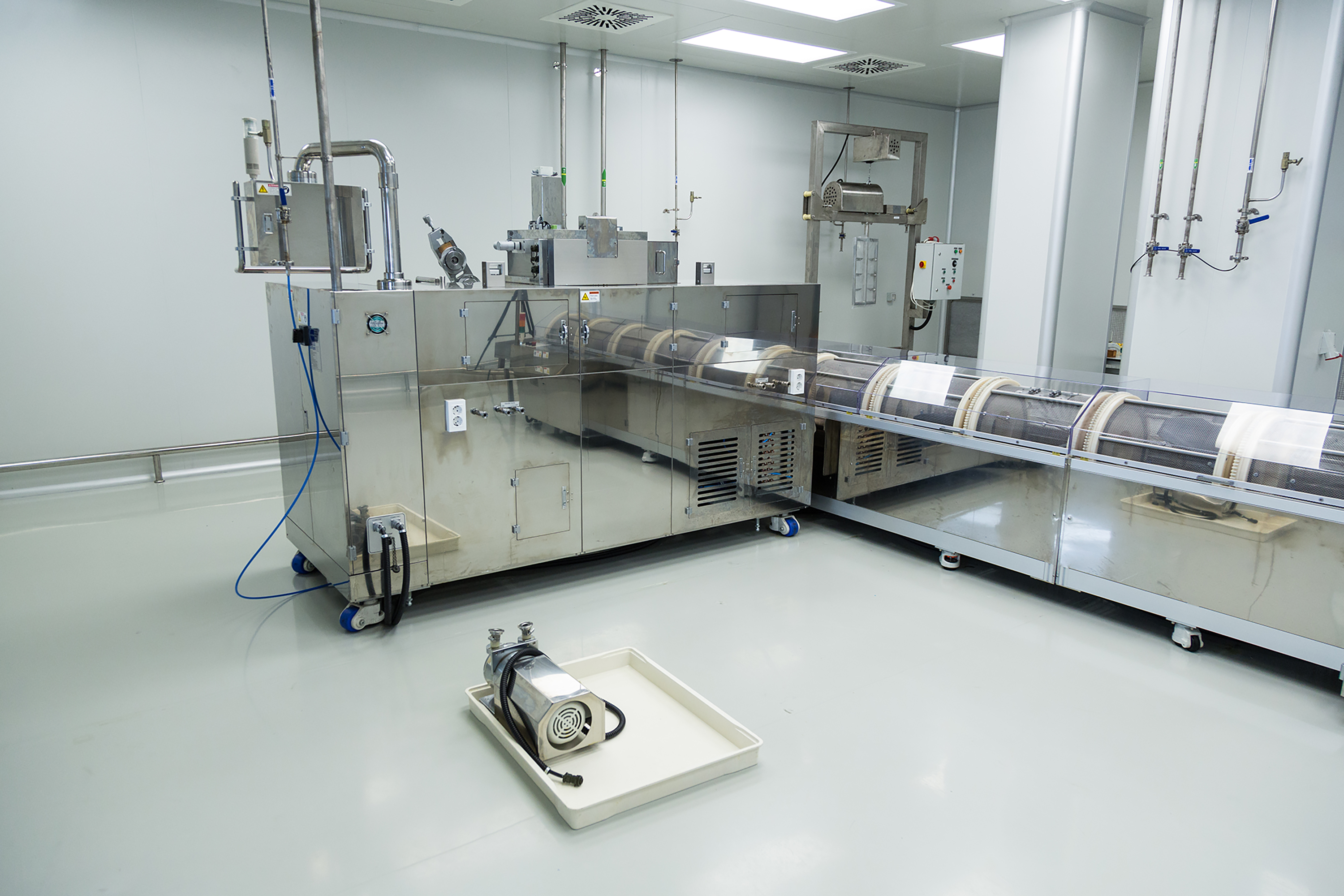For those of us in lab design, we know that cleanrooms can be one of the most complex spaces to design. Cleanrooms provide a space where the particulate count in the air is regulated. A wide variety of clients require clean spaces to conduct their business, whether it’s based on their own SOPs (standard operating procedures) or required by regulatory agencies. Cleanrooms offer an indoor environment unique to any other indoor environment—and with it, pose some unique design challenges.
Cleanrooms are classified by the International Organization for Standardization (ISO). This standard allows for the rooms to be classified by restricting particulate count ranging from ISO 8 (Class 100,000) down to ISO 3 (Class 1). This classification governs the particulates allowed to infiltrate the air.
What are some construction types of cleanrooms?
• Stick built: Custom fabricated and built in place by the sub-contractor, these labs can take on any shape, and be flexible and sensitive to any existing conditions.
• Modular (i.e. Plascore system): This is a panelized system, typically with standard modular sizes, built in a factory and shipped to the site. Panels are then assembled together in the field by trained professionals usually by the manufacturer. There are third party companies who provide this service as well.
• Hybrid: These are built as a combination of the two aforementioned methods.

Image: Shutterstock
Depending on cleanroom function, space design and layout can vary. However, most cleanrooms have similar distinct design features for successful operation, including:
• Gowning rooms. One of the first spaces encountered when entering a cleanroom is the gowning room. This space (typically of higher classification) allows an employee to change into the proper attire for the clean process inside.
• Ante rooms are intermediate rooms that allow for stepping down the ISO classification for entering/exiting the cleanroom.
• Air locks are similar to ante rooms and are designed for people or equipment.
• Pass-through rooms are used for samples moving from one room to another of different classifications. These can be bigger for wheeled equipment as well.
• Windows are designed in cleanrooms for a few reasons, a common reason being safety. It is important to make sure the people working inside a cleanroom are safe. Windows are detailed to be flush glazed to avoid any horizontal surfaces that might create an extra cleaning burden.
Many industries use cleanrooms, including pharmaceutical, micro-electronics, semiconductor and medical device, to name a few. Cleanrooms for the pharmaceutical industry have a high cost per square foot, mainly due to the use of 316 Stainless steel for corrosion resistance among other reasons. The pharmaceutical industry often requires decontamination of cleanrooms, which is typically done by vaporized hydrogen peroxide or chlorine dioxide. Both methods tend to corrode some metals, making stainless steel a necessity.
Cleanrooms require specialized materials and systems that drive up the building cost, including:
• Cleanroom flooring is commonly specified as poured in place epoxy or urethane or sheet vinyl with heat-welded seams. These types of floors allow for a continuous floor system with an integral cove base.
• Cleanroom walls can be coated with fiber-reinforced plastic panels for a more durable, yet expensive solution. A less expensive option is epoxy paint.
• CPVC (Chlorinated Polyvinyl Chloride) is a type of plastic panel used inside cleanrooms on the walls and ceiling that allows for corrosion and chemical resistance.
• Cleanroom ceilings are typically constructed of gypsum wall board or a cleanroom-rated ceiling tile and grid system. These tiles are sometimes made of vinyl-faced gypsum wall board, which make them heavier than normal ceiling tiles and require hold-down clips to prevent the exfiltration of air.
• Cleanroom lighting typically consists of lensed and sealed fixtures. These specialized fixtures are designed for wash-down procedures and to prevent the exfiltration of air.
• Cleanroom devices are typically manufactured of higher grade materials such as stainless steel, and require additional measures to keep clean and prevent exfiltration. An example of some devices may include gasketed outlets for power and data (with Bio-seal), recessed exit signs and special phones, intercoms and cameras. All these materials provide easily cleanable surfaces, as well as other benefits such as chemical resistance.
• HEPA (high efficiency particulate arresting) filtration are high performance filters used to reduce the particulate count in the air. These filters are subject to specialized cleaning and changing, sometimes referred to as “bag-in, bag-out.” This can be done inside the cleanroom, remotely above or at the air handling unit.
• Specialized cleanroom furniture is typically made of stainless steel and/or high grade plastics.
• Supply and exhaust air (the mechanical system) are the main cost drivers for cleanrooms. Air handling is where the big dollars are spent. These costs have a wide range depending on ISO classification, temperature control, pressurization and relative humidity requirements.
Taken together, each of these features contributes to the increasing expense of designing and constructing a cleanroom. Typically, construction costs for an ISO 8 to ISO 7 cleanroom can range from $250/sf to $1,500/sf or more. Working with an experienced cleanroom lab designer can help a company determine its design priorities and manage the costs of building a cleanroom accordingly.
Raffe Khazadian, AIA, NCARB, LEED AP O+M, CDT, is an associate principal at TRIA, a partner-led architecture firm with a focus on science and technology organizations bringing new discoveries to the market. www.tria.design




